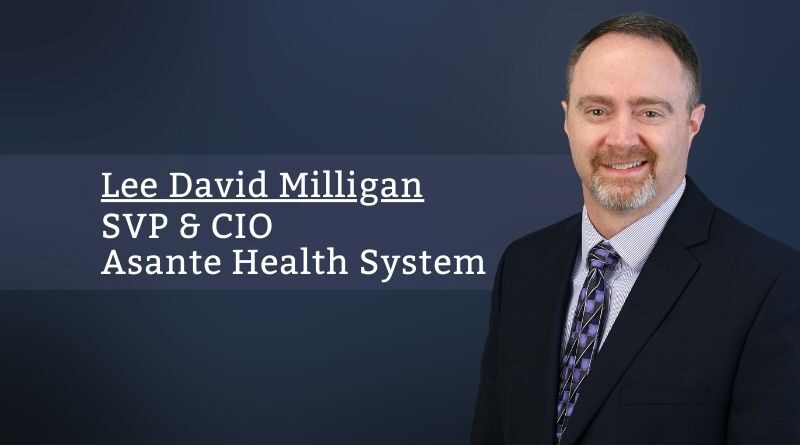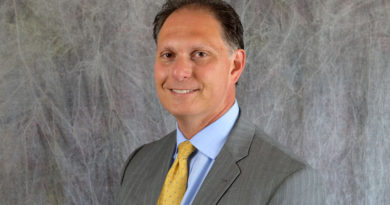The Rapid Evolution of Cognitive & Procedural Telehealth
By Lee David Milligan, SVP & CIO, Asante Health System
The concept of cognitive Telehealth has been around for many years. It’s convenient, fast and when accomplished without technical snags, is quite efficient. If we broaden our definition to include all non-in-person visits such as simple, voice-only telephone encounters, the number climbs even further. However, despite this apparent utility, the numbers of total U.S. cognitive telehealth visits up to and including 2019 remained relatively low. We had the technology. In fact, we had the technology in place, ready to use—primarily through a module within the EHR as well as stand-alone platforms. But many doctors were reluctant to move forward. Some cited a sense of depersonalization; some felt the telehealth framework did not allow for an adequate physical exam and some were, at the time, averse to technology.
Then, in March 2020, COVID-19 hit. ERs across the country were busting at the seams while ambulatory medical clinics were shutting down as non-emergent, in-person visits posed too high a risk. If this were to keep up, the impact to the long-term physical and emotional health of patients and the financial impact to providers would be catastrophic. A collective and simultaneous realization occurred across the medical community—Telehealth would allow for continued interactions between doctors and patients without the risk of spreading COVID. This physical separation would serve to both decrease the risk of aerosolized transmission of the virus as well as simultaneously preserve, what was at the time, scarce Personal Protective Equipment (PPE). Suddenly, the country pivoted on a dime. Many utilized their EHR Telehealth platforms, while some leveraged other platforms. To aid in this rapid utilization, CMS announced that it would temporarily suspend the previous tight restriction on using non-medical grade platforms such as Apple’s FaceTime, Google’s Duo and Microsoft’s Skype. This restriction had been put in place to protect patient privacy in line with HIPAA federal law. At this stage, the public health risk of not having patients seen for their care was deemed to be greater than patient privacy risks if a breach occurred. And, in lockstep, payers began to reimburse Telehealth visits on par with in-person visits. That lit the powder keg and physicians use of Telehealth platforms to investigate, diagnose and treat patients exploded. The weekly number of telehealth visits rose from 16,540 to 397,977 per week — a 23-fold increase — from the pre-COVID-19 period to the COVID-19 period(Healio). Between June 26 and November 26 of 2020, Telehealth visits accounted for a whopping 30.2% of weekly Telehealth visits (CDC data).
Physicians’ initial reluctance has given way to the practical reality that technology can bring a host of benefits not previously recognized.
On a separate yet equally exciting track, procedural Telehealth has been evolving at a rapid clip. That is, video technology specifically orchestrated to maximize the result of a surgical procedure. Consider the example of a patient in Peru who requires cleft-lip corrective surgery, but facial reconstructive surgeons are not locally available. Years ago, this required a surgeon and his/her team to travel to the destination country and physically perform every procedure. Now, surgeons can work in teams—a local general surgeon who performs the procedure and a specialty trained surgeon connected via a video fed computer platform who can guide, advise and assure the quality of the procedure. And the outcomes are impressive. 30-40% improvements in cosmetic results were suddenly possible.
In lockstep, video capability has been expanding dramatically with heightened bandwidth and advanced computer and data storage power. Together, the clinical use case combined with advancing technology has effectively made this dream a reality. A London-based company is pioneering procedural Telehealth. Their technology provides a digital user interface, on both sides of the equation. Their platform applies basic and advanced tools to allow surgeons to highlight key aspects of the procedure as well as more advanced capability such as augmented reality. Local video storage is frequently accompanied by cloud-based storage in AWS which will allow for a centralized repository of searchable procedures. How cool is that? Imagine a doctor searching the database to see the specific procedure he/she is studying.
The implication of having these databases of video procedures for medical training are huge: medical students, interns, residents and ongoing continuous training for established surgeons. Imagine the doctor preparing to assist on an appendectomy. He/she can now watch the surgery –from initial incision to last closing suture. He/she can pause and rewind on particularly complex aspects until it is clear. In short, the physician can now really see and understand what is supposed to happen before actually doing so on a live human.
Further, surgical credentialing of established physicians, is being impacted as the old process to credential a doctor is being supplanted by this new technology. Previously, for the hospital to allow a surgeon to perform a procedure that is new to him/her, it required the physician to watch 10 of these specific surgeries and then perform 10 of these surgeries with supervision. Now, both the observing and proctored surgeries can be accomplished via a technology platform. Zero travel. And a full recording for reference.
Where Cognitive and Procedural Telehealth goes in the near to medium-term future, will depend largely on several key factors including payer reimbursement, levels of federal and state support and, I believe, ease of technology use. If physicians and patients can continue to derive and prove massive value from this expanded use of both cognitive and procedural Telehealth, then it is likely to continue to expand as a fundamental healthcare delivery vehicle for the foreseeable future. Physicians’ initial reluctance has given way to the practical reality that technology can bring a host of benefits not previously recognized. And the technology can be delivered in such a way as to make the experience beneficial for both the patient and the doctor. And, ultimately, patients are benefitting from technology which finally unburdens both the physician and the patient while connecting all of us in meaningful and objectively measurable ways.



